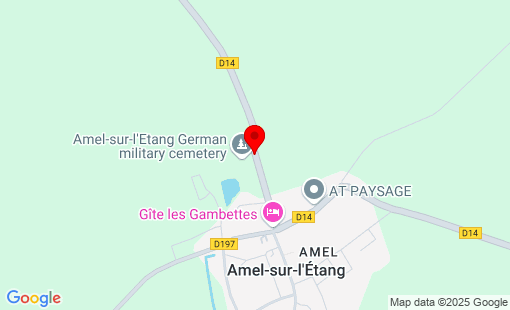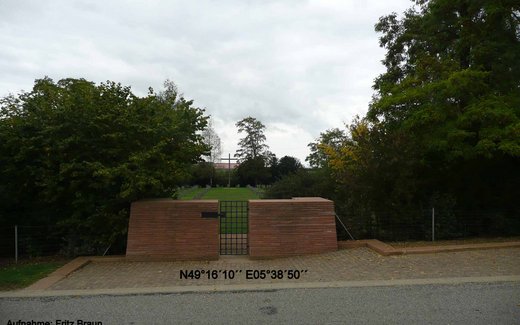France
Amel-sur-l'Etang
Total Occupation: 2.284 fatalities
Total Occupation: 2.284 fatalities
Open all year round
Département Meuse 2,284 German war dead First World War The German military cemetery in Amel was established by their own troops at the beginning of the German offensive against Verdun at the end of February 1916. Several military hospitals and dressing stations were also set up in Amel so that the wounded could be treated as quickly as possible. Those who succumbed to their injuries were laid to rest in the cemetery. In some cases, detached units brought their dead from the battlefield to Amel. The burials took place almost exclusively during the year 1916. Further casualties came to Amel as a result of the French attacks in the summer of 1917 and the French offensive in September 1918. Only a few casualties came from the battles of the German advance in August 1914. In 1916, the painter and sculptor Uffz Leistner from Leipzig created a memorial to the dead of the 50th Inf. Div. which had suffered heavy losses, particularly in the battles around Fort Vaux and its surroundings. The memorial was dedicated on September 21, 1916 in the presence of the Commanding General of the XV Army Corps. After the end of the war, the French military authorities transferred further dead from the area of eight neighbouring municipalities to Amel. Those buried here belonged to units whose home garrisons were in Bavaria, Württemberg, Baden, Hesse and Saxony as well as in most of the German provinces at the time. Repair work between the wars Initial work to improve the condition of the cemetery was carried out by the Volksbund Deutsche Kriegsgräberfürsorge e.V. (German War Graves Commission) on the basis of an agreement reached with the French military authorities in 1926. As early as 1927, a large number of trees were planted and the cemetery was landscaped, followed a year later by the expansion of the entrance area. At the same time, the communal grave was given a natural stone border. The memorial had to be restored as it had suffered considerable weather damage due to the war and was made of less stable material. The problem of permanently marking the graves remained unresolved due to a lack of foreign currency and the outbreak of the Second World War in 1939. Final design Following the conclusion of the Franco-German War Graves Agreement on 19 July, the Volksbund Deutsche Kriegsgräberfürsorge e.V. - financially supported by the German government - was able to carry out the final design of the German military cemeteries of the First World War in France. Young volunteers from the Volksbund had already begun preparatory gardening work. in 1976, the previous temporary wooden grave markers were replaced with natural stone crosses engraved with the names and dates of those buried here. Of the 2,284 fallen, 1,251 rest in individual graves. Of the 1,033 dead in the common grave, 984 remain unknown. For religious reasons, the six graves of the fallen of the Jewish faith were marked with a grave stele - also made of natural stone - instead of a cross, the Hebrew characters of which read: 1 (above) "Here rest buried ... ." 2. (below) "May his soul be bound into the circle of the living." This was followed by a thorough landscaping of the entire area. Trees and hedges were planted and the border of the communal grave was renewed. The monument could no longer be repaired due to the completely desolate structure and had to be demolished. In its place, a high cross made of forged steel was erected as a central marker.


